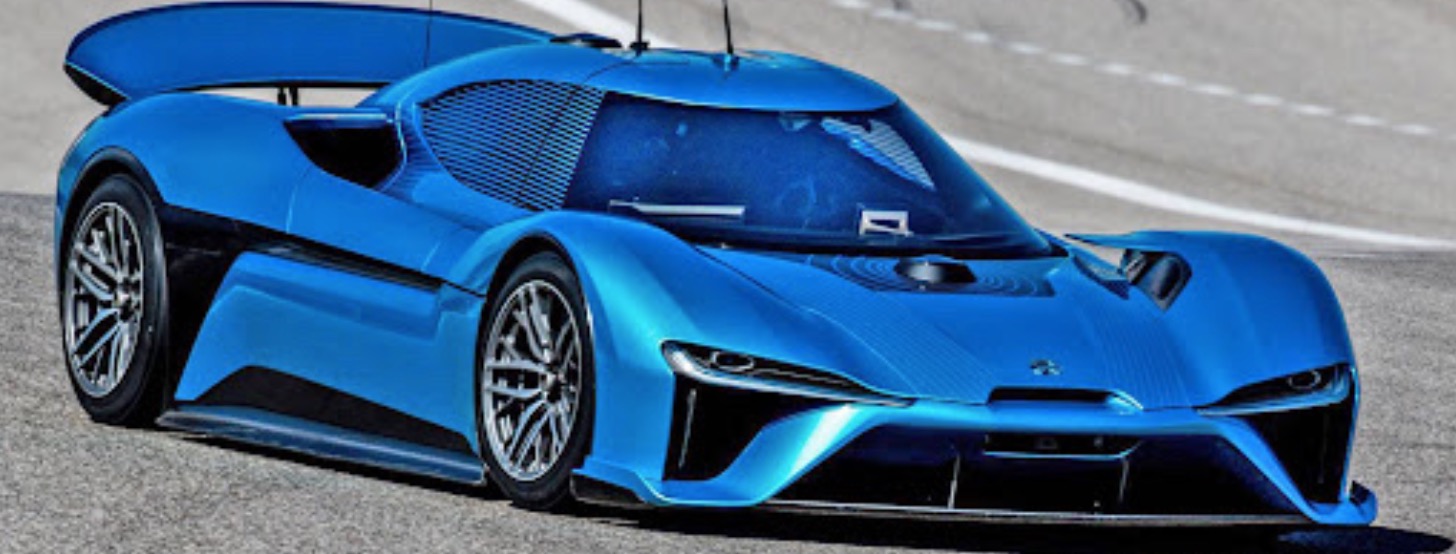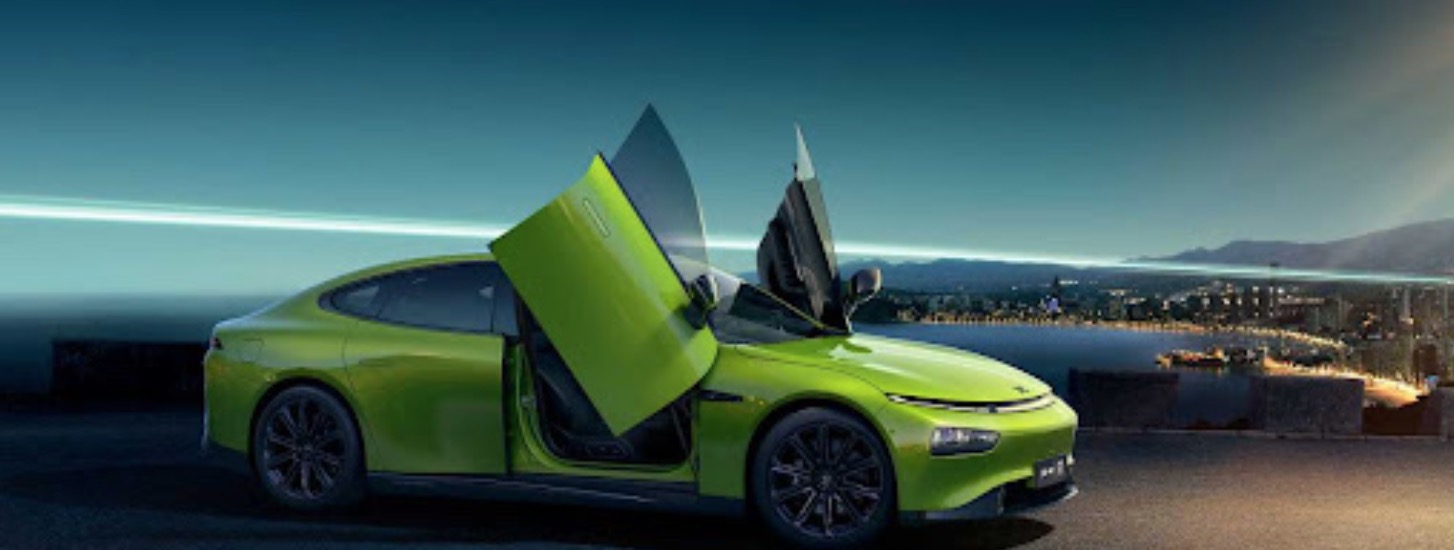06 Mar SupChina : Why China’s electric vehicles are all over Europe
From toys and t-shirts to cars and computers, China is nearing the top of the global value pyramid. Now China’s electric cars are giving premium European brands a run for their money.
SOURCE: SupChina
04 MAR 2022 By Chang Che
On the Mediterranean island of Corsica, halfway between Marseilles and the Italian shore, stands a rental car lot fitted with Europe’s finest automobiles: German Audis, Italian Fiats, and Spanish Peugeots. Lately, it has featured a new offering: an electric SUV, in silver or azure, with an alien logo — five oblong plate arrayed in the shape of an “X.” The brand is “Aiways,” a portmanteau of the Mandarin word for “love” (ai) and the English phrase “on the way.” (In Chinese, the company is called 爱驰汽⻋ aìchí qìchē)
The rental agent Hertz Corsica recruited the help of Aiways, an all-electric Chinese startup, as part of an island-wide electrification scheme in the summer of 2020. “We looked at our historical suppliers, but they just didn’t have enough volume to offer,” said Jean-Noel Filippo, the general manager, to French media. The Aiways-Corsica deal appeared to subvert the once-universal symbol of Europe as the leading maker of automobiles.
China’s electric vehicle fleet has recently put the rest of the world’s markets on notice. There are around 50 Chinese companies making cutting-edge cars and components, over a dozen of which are now selling cars in Europe. Aiways was founded in Shanghai in 2017, and began exporting its first model, the allelectric battery-powered U5, to Europe just a year later. In 2021, the newcomer sold more than a thousand units to 11 EU countries including the Netherlands, France, and Denmark. Europe is now a beachhead for Aiways and many other up-and-coming Chinese EV brands.
Across China’s industrial heartland, high-tech goods are replacing the cheap fare of yesteryear — the shoes, trinkets, and paraphernalia of Western suburbia. In the next stage of Chinese growth, the electric vehicle is the trump card. Not long ago, Japan and South Korea made a similar journey West, vying in markets long synonymous with great powers and modernity. After decades of state planning, a pandemic, and urgent global attention to climate change, China is next in line.

Nio’s EP9, the world’s “fastest autonomous electric car”
How COVID fueled the growth of Chinese EV companies
Ambitious emissions targets and the lack of indigenous players are opening European auto markets up to Chinese imports. Under the E.U’s climate plan, 30 million electric cars must be sold by 2030. Last year, despite record sales, only 2.2 million EVs were sold. While traditional European marques like Renault, Volkswagen, and Fiat have promised a full-throated pivot to electric, they are held back by their internal combustion engine past. With very few pure electric start-ups raised on European soil, the continent is structurally receptive to new entrants with green DNA.
China accounts for half of all electric vehicles sold globally. Last year, 3.5 million of them hit Chinese roads, well over double the year prior. The burst of enthusiasm is partly the outgrowth of a decades-long policy blueprint. “It was not an advantage for China to be dependent on a carbon-based energy supply chain,” Bill Russo, founder and CEO of Automobility Ltd., an advisory firm in Shanghai, told me.” To wean itself off fossil fuels, the Gatorade of American imperialism, national documents began mulling plans for “renewable energy” and “electrification” as early as the 1980s. Three decades later, the head start has turned into a sizable lead.
China’s electric car armada can be sorted into three groups. They include pure-Chinese startups, such as Xpeng, Nio, and Aiways; legacy manufacturers such as Great Wall Motor, BYD, and SAIC; and formerly European brands acquired by Chinese companies, such as SAIC-backed MG, Daimler’s Smart, Volvo’s Polestar, and Lynk & Co, the last three of which are jointly owned by Hangzhou-based carmaker Zhejiang Geely. Nio, a New York-listed startup from Shanghai with deep pockets, began selling its SUVs in Norway last year. In December, it claimed plans to expand to 25 countries by 2025, including Germany, Netherlands, Denmark, and Sweden. The company is also planning a U.S. entry, hiring marketing strategists in San Jose, California, and raising capital through a secondary listing in Hong Kong.
Paradoxically, the pandemic has helped the new Chinese entrants. The €1.07 trillion ($1.2 trillion) economic stimulus package, passed by the European Parliament in 2020, included incentives for electric car purchases. Although the subsidies benefited both Chinese startups and traditional European automakers, the Davids and Goliaths, pandemic supply shocks disproportionately hit the latter. “The traditional OEMs in Europe, all of them had a shortage in components and therefore sold less cars than they did before [the pandemic],” Alex Klose, an executive overseeing Aiways’ European expansion, said on the China EVs & More podcast. “There is a space in the market that isn’t fulfilled.”
In that space, China sees the chance for an image makeover. While Japan Inc. elicits the image of welloiled keiretsu lines, China Inc. has long evoked dirty factory floors and the smell of burnt plastic. “If Chinese car brands have no influence in the international arena,” said Wèi Jiànjūn 魏建军, the chairman of Great Wall Motor. “The efforts of the past 20 years will have been squandered.” Liberals talk ceaselessly of China’s efforts to revise the international order, a chess game led by hard-nosed politicians with planes, tanks, and suits. But there is a softer, reputational revision underway, led by ambitious, sometimes zany entrepreneurs with big marketing budgets.

An Aiways U5 gets a charge
Batteries are the key advantages of China EV Inc.
In their quest to become household names in the West, Chinese auto manufacturers face an uphill battle. “Chinese products have a history in Europe with regards to cars, which is not the best,” Alex Klose, Aftersales Director of Aiways Europe, told me. For example, In 2006, the automaker Jiangling Motors debuted its new Landwind New Vision at the Frankfurt Auto Show. But their hopes to become a global brand were dashed when a crash test by the German automobile club, ADAC, found that the car disintegrated upon impact.
But much has changed in the ensuing decades. For one, the technology tables have turned. “China did not have a domestic automotive industry,” said Russo. “All the core IP [around the internal-combustion engine], it didn’t have ownership of the invention.” Throughout the 80s and 90s, Chinese cars were practically carbon copies of overseas brands. Now, in the electric vehicle era, it is China that holds the intellectual property keys.
Batteries are the pillar of China’s competitive advantage. BYD, one of China’s largest battery and carmakers, was one of the first to sell a plug-in hybrid into European markets in 2011. Four years later, the Shenzhen-based manufacturer bested four automakers in a contest to supply electric buses to the Amsterdam Airport. With cost-effective batteries, Chinese EVs are price competitive. Last year, BYD’s flagship EV brand, the Tang EV, sold over a thousand units in Norway, four months after it came to market. BYD outsold Tesla in China last year and Nio and Xpeng ranks ahead of the Volkswagen ID.3 and ID.4, the third and fourth best-selling electric brands in Europe.
China is also pushing the frontier of EV software. Today, some of China’s largest tech and internet companies like Huawei, Alibaba, and Baidu provide the digital backbone of China’s electric vehicles. “Smart cars” can identify consumer pain points via big data, or execute software updates like an iPhone. “China EV Inc. staff are dominated by software developers,” said Tu Le, Partner of Sino Auto Insights.
Foreign car imports face a 10% tariff in Europe, but China is still price competitive, according to the consultancy firm Jato Dynamics. The cost of new electric cars has nearly halved in China since 2011, while the average price of their European competitors is rising. Legacy brands also face higher overhead costs, so the smaller, nimbler Chinese carmakers might do better in a rapidly evolving industry. “China EV Inc. has a blank slate,” said Le. “They can try new things, dipping their toes with local markets and course correct if some things don’t work.”

Xpeng P7
Chinese companies behind European EV brands
Many Chinese brands approach Europe in the leery manner China approached liberalization: crossing the river while feeling for the stones. “They try to do it in a very controlled manner,” said Victor Irle, cofounder of EV-volumes, a global electric vehicle data platform. “Not growing too fast (most likely on purpose) so that they can control the customer experience and collect as much input as possible.” Nio and Xpeng first set up a beachhead in Norway, the most electrified car market in the world. Both have yet to break the one thousand sales mark in cars, yet Norwegian citizens can already find a high-end, 2,150 square-meter Nio showroom in downtown Oslo.
The toe-dipping appears to reflect the behaviors of a more experienced industry. Klose, who worked previously at Jaguar, Land Rover, Ford and Volvo before joining Aiways in 2018, says he has learned a thing or two from his Asian predecessors. “We don’t just send cars which don’t fit to European taste or to European driving habits,” he said, referring to past mishaps by Japan and Korean automakers. “If you come to China and say, ‘do you want to have my car?’ How many cars do you want? 500. Okay, we’ll send you 500. That doesn’t work at all.” Cars are an emotional product, and Europeans, for the most part, like to buy local. As a result, Klose fixates on relationships, including cultivating after-sales networks, working closely with importers, and building strong customer service teams.
While some Chinese automakers focus on brand, many are already big players in Europe in more subtle ways. Some of the best-selling European brands, like the former British MG, are now Chinese-owned. Meanwhile, European brands are inexorably tied to China. BMW’s iX3 began production in Shenyang and many of Europe’s Tesla Model 3s were imported from its factory in Shanghai. BMW and Volkswagen (as with most Chinese upstarts like Nio, Xpeng, and Aiways) are powered by CATL, the world’s largest battery manufacturer headquartered in Ninde, China.
China’s ascent up the global value chain is perhaps most vivid in the electric vehicle space. Here, European consumers are already buying Chinese not for price, but for quality and performance. There are still potential risks. In the past, Europe’s lawmakers imposed quotas on Japanese cars, and Chinese EVs could soon face something similar. Then there’s data privacy: Just as Tesla is beholden to Chinese data security laws, Chinese EVs will be headed for a collision with Europe’s stringent GDPR regulations. But the product speaks for itself. “One of our first customers was a guy who just had seen the car being tested on YouTube and he said, ‘yes, I’ll buy it. I’ve seen the guy testing it, I saw what he did with it and I’m happy, I’ll just buy it,” Klose recounted on a podcast recently. “And by the way, the guy was 70 years old.”
Inside the halls of the French parliament, during the summer of 2020, the Chairman of Renault Jean-Dominique Senard, warned French lawmakers of “ferocious competition” coming from the East as Europe remained crippled by the pandemic. “We have to recover quickly to be able to counter these new entrants,” he said. Just across the Mediterranean, on Corsica’s craggy peaks, French vacationers wiled away the pandemic months on their electric Aiways.




Sorry, the comment form is closed at this time.